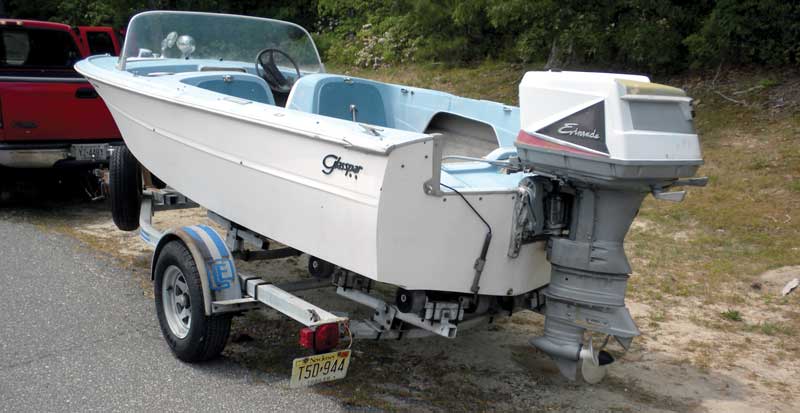In the first few years after World War II, boat sales increased rapidly. Returning GIs wanted everything and had the savings to make big purchases. There was pent-up demand for cars and houses as well as an expansion of hobby interests.

But by the mid-1950s each boating industry manufacturer had to have a strong sales message to effectively compete. Sales growth was no longer automatic or predictable. New and higher-capacity engine models among the major manufacturers led the market. This boost in innovation among boat engine manufacturers also increased inboard boat sales, as a wide variety of new choices in outboard-powered boats became available.
With the surge in demand for higher horsepower outboard engines, boat designs naturally evolved that were both bigger and heavier powered to accommodate them. One example of this demand is reflected in the explosive growth of Evinrude outboards in fewer than ten years. During this period, they launched a four-cylinder, 75-hp engine.
That engine powers the Glasspar Citation featured in this photo. This is the same engine that pushed Hugh Entrop to a record speed of 122.97 mph with his purpose-built 14-foot hydroplane. He “set the world on fire” with this straight-away top speed. Evinrude was suddenly more than a pleasure boat engine manufacturer—it was now the popular choice for racers. I still remember how it blew my mind as an active boater in my teens when this record was set with an Evinrude-powered racer.
The Evinrude outboards were actually styled by Brooks Stevens, an “outside” industrial designer. He was both a “friend” of the corporation and a for-hire consultant. That styling distinction gave Evinrude a fancy engine cowling in a variety of colors and finishes that outpaced the competition.
Glasspar
Fiberglass boats and boat parts were becoming mainstream during this extended post-World War II period. The boats are usually made in two molds: one for the hull, one for the deck. Often wood frames and stringers are added to the inside of both the hull and deck molds to increase the strength of the boat. In the 50s and 60s, a plywood floor covered in fiberglass was also added to the interior hull part of the boat.
The Glasspar Company was an early boat builder in those days, founded circa 1948 by Bill Tritt in southern California. His early fiberglass products were sailboat parts (masts and spars for masts) in addition to small boats.
Tritt made the spars as well as small boats (mostly sail and yacht-tender size). He also built a one-off 21-foot cabin cruiser. In the 1950s, he was hired to build a new sports car, launched by a commissioned design for Major Ken Brooks of Newport Beach, CA. Originally called the Brooks Boxer, the car has become known as the G2. About 70 of the G2s are still around.
The Glasspar auto body was originally designed for the Henry J frame. It is said that GM builders bought three of the raw bodies. They measured and dissected them, and the net result led to the Corvette. And that design generated the need for a fiberglass hardtop. Soon after, similar hardtops were being produced for MG, Porsche, and other sports cars.
The combination of “Glas” and “spar” reflected his business niche, hence the company name. In the mid-1950s, Glasspar was “America’s largest manufacturer of fiberglass boats.”
This 1962 Citation model Glasspar is a fiberglass family boat. Glasspar first introduced its Citation model in 1960. Two rows of seating and a roomy cockpit offers plenty of space to accommodate multiple generations onboard. She has a 79-inch beam for good stability and the ability to take the bigger engines. Engine controls for throttle and gear shift as well as forward cockpit steering adds to the higher-power engine choices. She is a trailer boat allowing use all over the Chesapeake Bay from her home garage in Philadelphia, PA.
This photo is from the Antique Outboard Motor Club, Inc. (AOMCI) meet at May’s Landing, NJ. AOMCI is a club that is mentioned under “Marque Club” status by the ACBS. At this meet, parts and engines were for sale as well as displays of restored old outboard motors. There are no fees or charges, nor membership requirements to attend most of their meets.
By Chris "Seabuddy" Brown